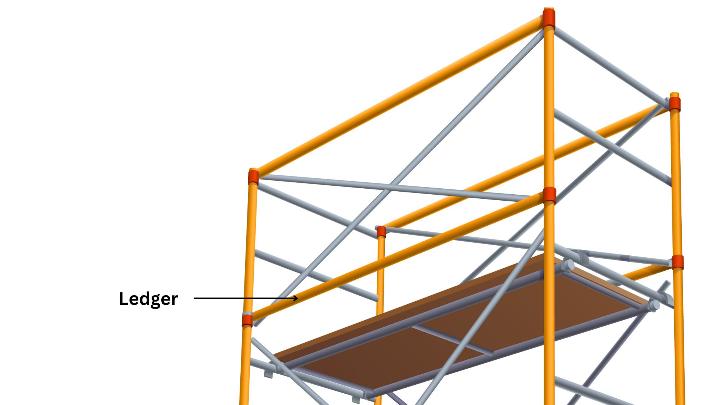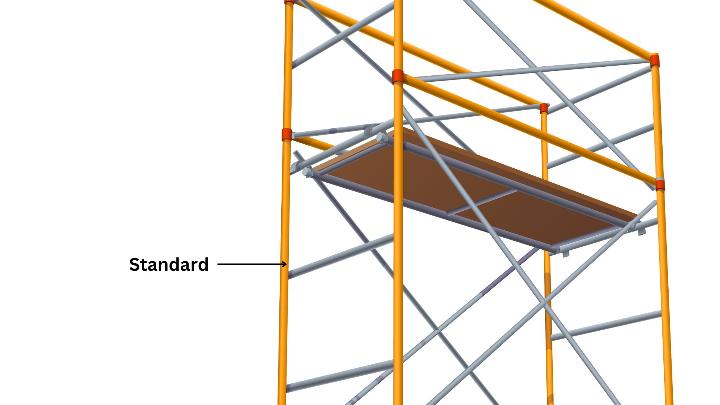Scaffolding is a common sight at construction and maintenance sights. This temporary structure provides platforms and access for workers operating at height. But there’s more to it than the metal poles and wooden planks you see from afar.
A scaffold is made up of various components, including ledgers, standards, and transoms. In this guide, we’ll define each, explain how they work, and highlight their importance.
What Are Ledgers?
Ledgers, also known as runners, are horizontal tubes that run along the scaffold’s length. These tubes support the working platform and help distribute weight evenly. Without them, creating stable surfaces at different heights would be unsafe for workers.
Ledgers are secured using couplers, which are special clamps that hold the scaffolding. Their placement determines how high the decks or boards are staged. For instance, placing them higher allows for boards to be positioned at greater heights, which is useful when working on tall buildings.
What Are Standards?
Standards or uprights are long vertical pipes or tubes that connect the scaffolding to the ground. They are positioned at both the back (nearest the building) and the front of the scaffold. Each standard’s base is secured to a base or foot plate— a scaffold protection that helps disperse the weight it supports. The absence of these components could lead to structural collapse and legal repercussions.

In taller scaffolding, these pipes must be connected to maintain balanced weight support across the scaffold. This can be achieved using a pin and socket joint, which twists to lock or connect successive pipes.
These components have fixed lengths, meaning each standard is a specific, unchangeable size. For instance, the outer diameter is 48.3 mm, with material thickness ranging from 3.2 mm; 3.6 mm; 3.8 mm; and 4.0 mm. This standardisation is determined by industry standards and regulations. The BS 1139 is a great example, which specifies parameters for size, thickness, material and load capacity of scaffolding materials.
[Size Source]
What Are Transoms?
Transoms, also called bearers, are horizontal tubes that span across the ledgers, positioned at right angles facing the building. Their purpose is to stabilise the scaffold structure by holding the rows of standards in place. Structural failure also becomes more likely without these bearers.
There are three types of transoms, each with a different role:
- Main transoms provide support for the standards and the working platform by holding them in position. They are positioned next to standards.
- Intermediate transoms offer extra support for boards when positioned between the main transoms and the ledgers.
- Putlogs are a type of transom with a flat end on one side, attached directly to the building wall to support platforms.

The horizontal support of transoms also makes them a suitable attachment point for protective coverings like scaffold sheeting and classic debris netting.
Ledgers, standards, and transoms are among the many types of scaffolding components. These three form the basic structure necessary for a scaffold to function as expected.
For scaffold protection products, talk to our team of experts today for a FREE consultation. Our 5-star rated customer service is ready to help you with further queries. Contact us via hello@s-pgroup.com or call us at +44 (028) 9442 8611.